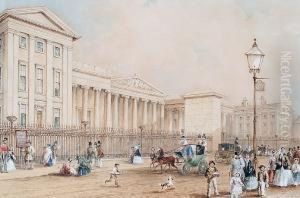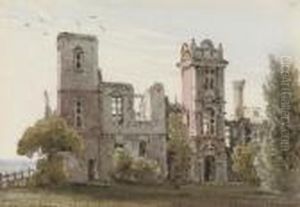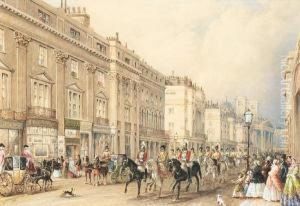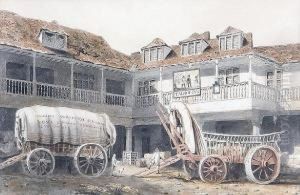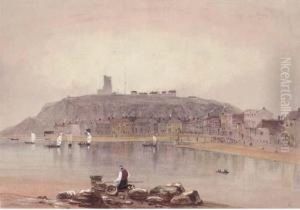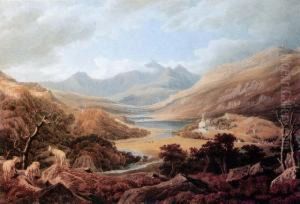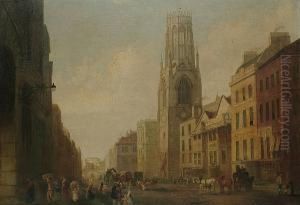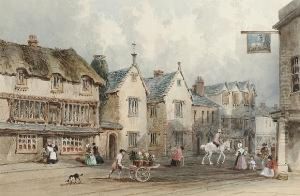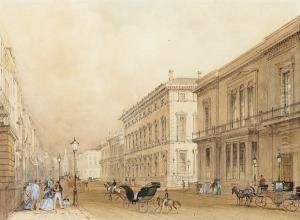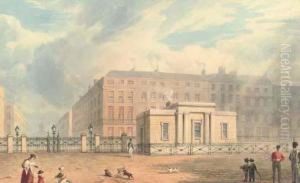George Sidney Shepherd Paintings
George Sidney Shepherd was a British draughtsman and watercolour painter, known for his architectural scenes and landscapes. Born in 1784, Shepherd's early life is not well-documented, but it is known that he lived and worked in London. His work primarily consisted of topographical illustrations, and he gained recognition for his detailed street views and architectural studies of London.
Shepherd was part of the Society of British Artists and exhibited at the Royal Academy between 1809 and 1824. Despite being less well-known than his contemporaries like J.M.W. Turner or John Constable, Shepherd's work was instrumental in documenting the urban landscape of London during a period of significant change, including the Regency and early Victorian eras.
His drawings and paintings captured the everyday life of London's inhabitants as well as the city's architecture with a remarkable attention to detail. They serve as valuable historical records of the time. Shepherd also contributed illustrations to various periodicals and books, including ‘Metropolitan Improvements; or London in the Nineteenth Century,’ authored by James Elmes and published in 1827, which showcased the urban development of London.
George Sidney Shepherd's works were appreciated for their accuracy and the clarity with which he portrayed the bustling city life. Despite this, he did not achieve significant financial success during his lifetime, and his works have often been overshadowed by those of more famous artists. He died in 1862, leaving behind a legacy that offers a window into the London of his time through his artistic works.



